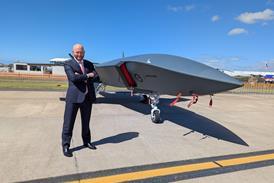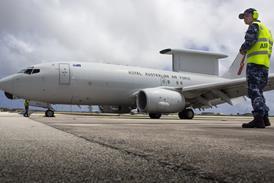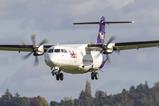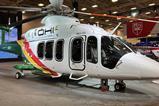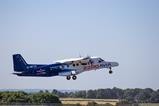Cranfield Aerospace Solutions (CAeS) has again pushed back the first flight of the hydrogen fuel cell-powered Britten-Noman BN-2 Islander it is developing though a UK government-backed project.
Working through Project Fresson, CAeS has been leading a consortium to replace one of the Islander’s two Lycoming piston engines with a new fuel cell powertrain running on gaseous hydrogen.
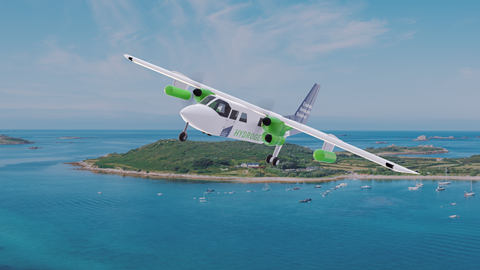
Most recently, CAeS was targeting a maiden sortie in 2024 for the modified Islander, leading to certification of the hydrogen fuel cell powertrain in 2026 and service entry the following year. Previously, first flights were mooted for 2022 and 2023.
But detailing the project’s progress in its latest accounts – signed off on 22 May but covering the 12 months ended 30 September 2023 – CaeS confirms the timeline for first flight has now slipped further.
“During the year, the company received £5,490k in convertible loan notes and will be looking to raise further finance with a Series B investment round to enable the company to finish developing the prototype and carry out a test flight in 2025,” chief executive Paul Hutton writes.
Responding to questions from FlightGlobal, CAeS says a delay to finalising the Series B funding is behind the slippage but “we’re making good progress on that.” Service entry “is still targeted at 2027 following certification in 2026”, it adds.
Although the accounts see a potentially improving picture, the company notes that the investment market “has been suppressed of late”, which “has been a factor in the Series B fundraising round.”
However, it adds: “There is still an investment market pull towards sustainability and given the company’s focus on Project Fresson and the next-generation aircraft, the directors believe it is well placed over the medium term, despite any short-term lumps and bumps,” Hutton writes.
CAeS says its “mission” is to “deliver the world’s first passenger-carrying zero-emission aircraft using hydrogen fuel propulsion”.
The powertrains under development are “modular” – ranging from 125kW to 500kW – “enabling them to be used in small passenger aircraft, cargo drones, and in auxiliary power units for single- and twin-aisle aircraft”.
Development of the modular hydrogen powertrains is “expected to lead to a significant volume of incremental business in the coming years,” it adds.
However, the research and development spending required to bring the powertrain to market saw net losses nearly double at CAeS, rising to £4.2 million ($5.3 million) in the period, up from a £2.2 million a year earlier.
Turnover slid to £2.1 million, down from £3.1 million in the previous accounts, albeit they covered a 13-month period. CAeS says the lower sales volume and a profit margin that fell to 6% from 22% previously reflect a pivot towards the hydrogen powertrain development.
Although CAeS says “Fresson Stage 1” is the conversion of the BN-2 to run on hydrogen power, one of the first applications for the fuel cell powertrain will be aboard the Black Swan cargo drone being developed by Dronamics.
CAeS and Dronamics share a common investor in the Strategic Development Fund (SDF) of the United Arab Emirates, which injected an undisclosed figure as part of the £14.4m Series A funding round.
The SDF holds 962,500, or 24.5%, of CAeS’s 3,962,703 Series A Preferred shares, alongside Hydrogen One Capital Growth (48.5%), Safran Corporate Ventures (24.2%) and Smart World Innovation Fund (2.8%).
Long-term parent Cranfield Group Holdings, meanwhile, retains the entirety of the company’s 1,000,000 ordinary shares.
CAeS in its accounts to 30 September 2022 stated that Fresson was a four-stage programme: phase one covering the conversion of the nine-seat Islander, phase two and three relating to 19-seaters, and phase four “being the development of a hydrogen propulsion 75-seater aircraft”.





